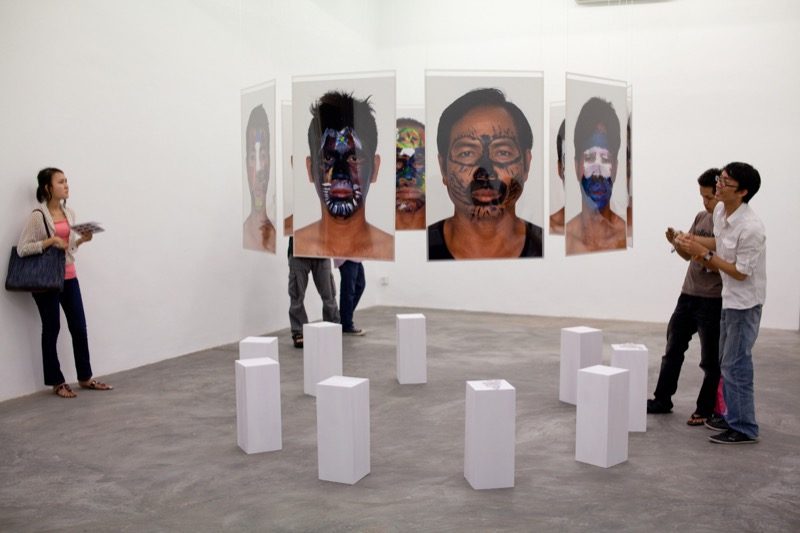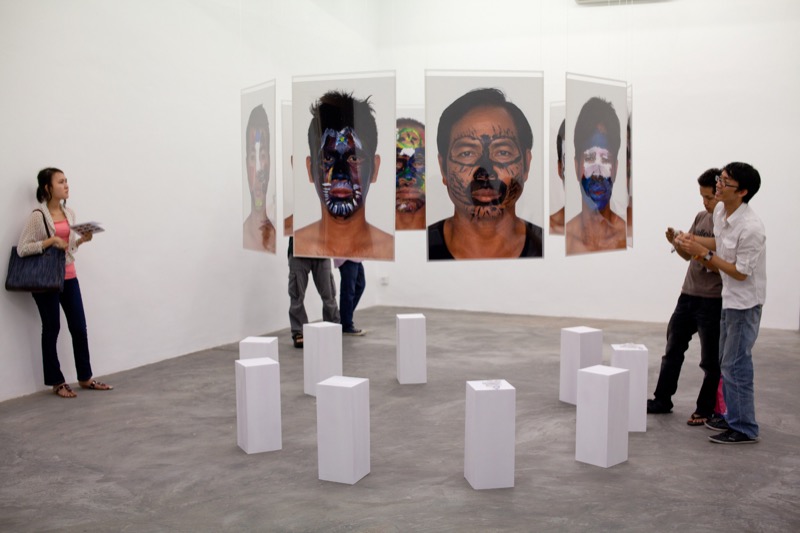In the introduction to his book “Photography in Southeast Asia, A Survey,” artist and researcher Zhuang Wubin cautions against valuing news photographers less than those who focus on art installations or themed exhibitions.
As the Singaporean author explains, “we continue to see certain kinds of photographic work…quickly valorized as contemporary art while other practices are haphazardly chastised as journalism.”

In Cambodia, many art photographers have also worked for news outlets.
A journalist by training, Mr. Wubin has been writing on Southeast Asian photography since the mid-2000s. A 2010 research grant from the Prince Claus Fund in Amsterdam enabled him to embark on a book on the region’s photographers and photography history. The result is a 522-page book, richly illustrated with about 200 photographs and a chapter on each of Asean’s 10 countries.
In the chapter on Cambodia, the 39-year-old researcher explains that Cambodian photographers risked their lives to cover bombardments and the civil war in the late 1960s and early 1970s. Photojournalist Dith Pran, best known as the subject of the film “The Killing Fields,” “believed that his work would convince other countries to intervene and save Cambodia from the impending tragedy,” Mr. Wubin writes. He says at least 20 Cambodian photographers were killed during that period.
During the Khmer Rouge regime, its leaders’ obsession with control led to photos being taken of every prisoner who entered S-21, as the Tuol Sleng extermination camp in Phnom Penh was known.
Those images—the subjects of which were nearly all later killed—continue to haunt the Cambodian psyche today, as photographer and visual artist Khvay Samnang discovered in the mid-2000s.
Asked to photograph students for their identification cards, the students told Mr. Samnang that the photos he had shot of them reminded them of those taken at S-21.
“When young people think of Tuol Sleng, they will always recall the portraits,” he told Mr. Wubin. This incident led Mr. Samnang to create a video and photo installation in 2008 entitled “Reminder.”
As war officially ended in the 1990s and normalcy began to return, the need for news photographers grew in Cambodia, though some continued to produce their own photo projects. In the early 2000s, Heng Sinith, who worked for The Cambodia Daily in the late 1990s and is now with the Associated Press, photographed former Khmer Rouge officials. During the regime, he told Mr. Wubin, no one was allowed to look at their faces. “They were more powerful than kings,” he said.
Mak Remissa, who is now with European Pressphoto Agency, also produced memorable series that have inspired a generation of photographers. His 2005 work based on a Cambodian proverb was entitled “When the Water Rises, the Fish Eats the Ant; When the Water Recedes, the Ant Eats the Fish.” In his series “Water is Life” in the late 2000s, his photos nearly turned into abstracts as he shot water organisms and oil colors in a water tank.
In the book, Mr. Wubin also talks of the photographers who emerged in the 2000s and created the group Stiev Selapak, or Art Rebels, which, with the support of curator Erin Gleeson, led to today’s SaSa Bassac gallery and meeting place. This included Vandy Rattana, who has exhibited internationally and now lives abroad, Heng Ravuth, Lim Sokchanlina and Kong Vollak.
In the 2010s, events such as Photo Phnom Penh headed by Christian Caujolle, a world authority in photography, and Angkor Photo Festival in Siem Reap City have helped photographers such as Sovan Philong and Kim Hak emerge internationally.
Writing and producing the book took Mr. Wubin several years. As a result, he said, some of today’s emerging photographers, including Neak Sophal, one of the rare Cambodian female photographers whose exhibition “Flower” opened last night at Java Cafe, do not feature in the book, he said on Tuesday in an interview.
One of the reasons Mr. Wubin embarked on the book project was to increase awareness of countries’ photography pioneers among a new generation of Southeast Asian photographers.
“It’s much easier for them to turn to the internet and look at American photography, for instance, than to look at Cambodian photography,” he said.




